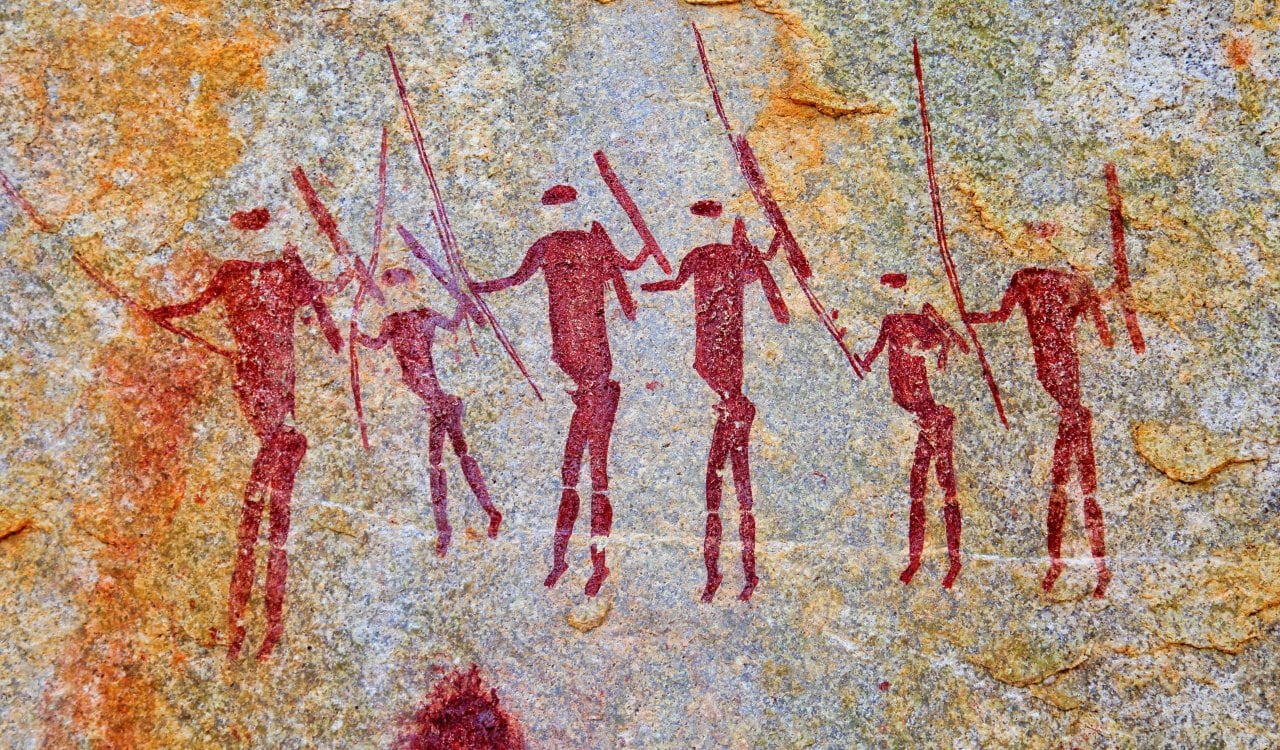In ancient times, you’d be surprised how many amazing things they did back then that we still do today. It might seem fairly small at times, but what they managed to do is, without a doubt, incredible. Ancient science refers to the scientific knowledge and practices that were developed in ancient civilizations such as ancient Egypt, Greece, and Rome. These civilizations made significant contributions to a wide range of scientific fields, including mathematics, astronomy, medicine, and physics. Of course, how some stuff is done today might differ from ancient times. However, this is only due to the rise of modern technology. Overall, ancient science played a crucial role in the development of many of the scientific concepts and practices that are still used and studied today.

Observation
- Historic Period: Pre-10,000 BCE
Observation has been a scientific method for thousands of years that goes back to our less evolved forms. In fact, mankind likely used this concept even before the Neanderthal period. We needed to observe and make a conclusion about something as a way to know if something was safe or not. In fact, what might be more interesting than anything else is that this specific method led to some evolutionary traits. Things like when you have a “feeling” something is bad or even the process of fear, all were likely present as a result of simply observing something. Ancient people, later on, would record their findings when doing experiments.

Classification
- Historic Period: 4,000 to 3,000 BCE – Various Civilizations
Classification has been both a gift and a curse for our world. The initial concept such as making specific classifications for plants and animals made a lot of sense. It allowed us to keep track and know what possible risks we faced. For example, if a specific plant was poisonous then we’d want to steer clear. If specific animals might look bad but are usually not going to attack humans, we needed to know this too. Most animals and plants were often classified by their characteristics, such as their appearance. Later on, we’d add more to the classification concept and go into far more depth.

Experimentation
- Historic Period: Pre-10,000 BCE – Various Civilizations
Experimentation, depending on how one defines it, could go back much further in history. Early Hominids, our major ancestor, likely experimented with things to know their threat level. Yet, if we’re discussing experiments such as those we might see today, they would likely not occur until major civilizations began to pop up. This did not occur until around 5,000 BCE…at least not in a major way. Those that might conduct experiments usually worked under the monarchy in a given kingdom or they’d work under some type of major leader. The reason for this is that most likely conducted experiments on weapons among other things critical to society.
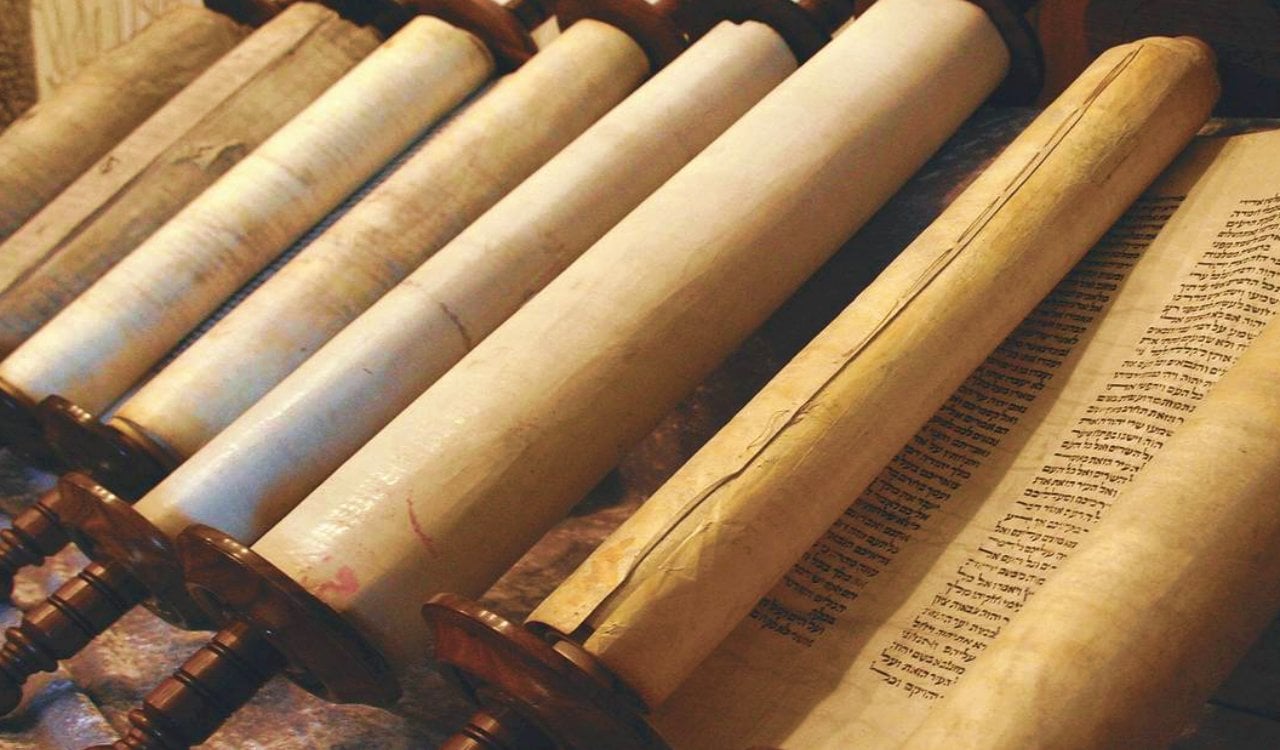
Record-Keeping
- Historic Period: Between 5,500 to 3,500 BCE – Mesopotamia & Sumer
Record-keeping was incredibly important to ancient people. In fact, if it was not…we’d know very little about many cultures. Record keeping can go as far back as the Neanderthal or “cavemen,” as they would draw on cave walls. This was a very early form of record-keeping. Eventually, things like stone tablets among others would keep vital records. This form of writing began around 5,500 BCE in Mesopotamia. Yet true writing that we might recognize today started around 3,400 BCE in Sumer, an area near the Persian Gulf. This Sumerian script was influenced by a lot of local materials and would become the first real long-form script in history. Later on, scrolls among other things would be used to keep records.

Astronomy
- Historic Period: Around 4,000 BCE – Babylon, Greece, China, Egypt
Astronomy is the study of movements and patterns of celestial bodies. This includes things like the sun, moon, and stars. Early on, astronomy was seen as an important science that could indicate what might happen in the future. This is why many ancient civilizations kept incredibly detailed star maps and astrological records overall. The assumption was that you could tell anything from how the stars looked, but most of this was complete BS. This led to an eventual separation between astronomy (actual science) and astrology (pseudoscience). As far back as 4,000 BCE cultures in Ancient Greece, Babylon, China, and several others used astronomy constantly. In fact, many Kings and Queens relied on this information so much that they were given daily records of star, moon, and sun positioning.

Mathematics
- Historic Period: 3,500 BCE – Ancient Sumeria
While mathematics was used in some form before it was officially “invented,” nothing was ever organized. Eventually, math became a big part of many lives in ancient civilizations. Math was used to measure and quantify natural phenomena. Initially, it was developed as a way to properly calculate the size and distance of celestial bodies for astronomy. This mostly started with ancient Egyptian, Greek, and Chinese civilizations. However, the earliest known recorded use of mathematics dates back to ancient Sumeria, around roughly 3,500 BCE. One of the oldest known mathematical equations is the Plimpton 322 tablet, which dates back to the Babylonian civilization around 1800 BCE. This tablet contains a table of numbers that represents the solutions to equations of the form a^2 + b^2 = c^2, which are known as Pythagorean triples.

Geometry
- Historic Period: Around 3,000 BCE – Ancient Babylon
While Geometry is technically part of math, it was technically not developed to be part of other forms of arithmetic at the time. It is one of the two fields from pre-modern mathematics though. The earliest use of geometry on record goes back to around 3,000 BCE in ancient Babylon. Geometry was mostly used for astronomy, construction, and surveying for various things. Yet, once Algebra and eventually Calculus came around, geometry truly exploded in its use and abilities. While we mostly knew geometry to be the understanding of properties of shapes and their relationship, it has become so much more.

Medicine
- Historic Period: Around 2,500 to 2,000 BCE – Ancient Sumeria, Greece, Egypt, & China
Most of what we know about modern medicine isn’t too far off from the original ideas ancient people had. Of course, some stuff changed for us due to the technology of our time, the knowledge we developed, and obviously modern medications. Early biology was studied by ancient Greeks and Chinese people as well as anatomy. Medicine came into play to help people with the use of specific herbs and natural substances. People would use these natural remedies for sicknesses and even injuries. Medications like this technically began with the ancient Egyptians, Greeks, and Chinese. Although Sumeria has the oldest known medical text, which dates back to 2,500 BCE. However, as we know, things would eventually expand in a major way within this field.
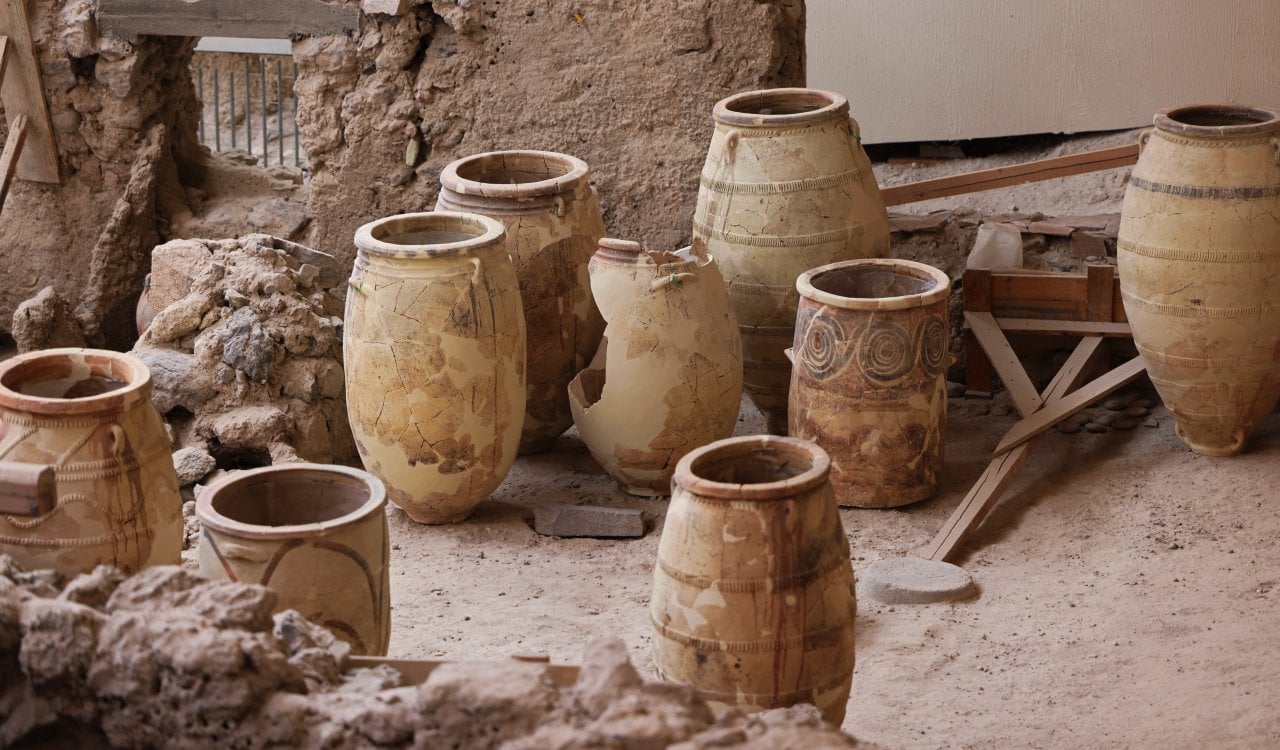
Pottery
- Historic Period: 18,000 BCE – Ancient China
Pottery is one of the few scientific techniques used by ancient people that remained somewhat consistent. Early pottery involved the use of manipulating clay and shaping it to make things like pots, plates, and other ceramic necessities. The oldest pottery we’ve found thus far dates back to roughly 18,000 BCE in ancient China, which shouldn’t shock most of us. Several Asian territories were home to small civilizations before a more organized larger civilization took over the land. It is interesting to point out that many cultures developed pottery concepts on their own. Some were even so proud of their pottery, they were buried with the stuff! Of course, pottery is different from other uses of clay but some still like to connect them.

Oceanography
- Historic Period: 300 BCE – Ancient Greece
Oceanography is quite an interesting field, much different from other marine fields. One of the most unique scientific techniques used by ancient people, oceanography is the study of the oceans and their properties overall. The ancient Greeks and Chinese developed early forms of this. The first known written record of research in this field dates back to the Greeks, around 300 BCE. The field covers pretty much everything related to the ocean in a huge macro concept. This will involve the study of marine life and ecosystems and the movement of sediments to even how currents and waves operate.
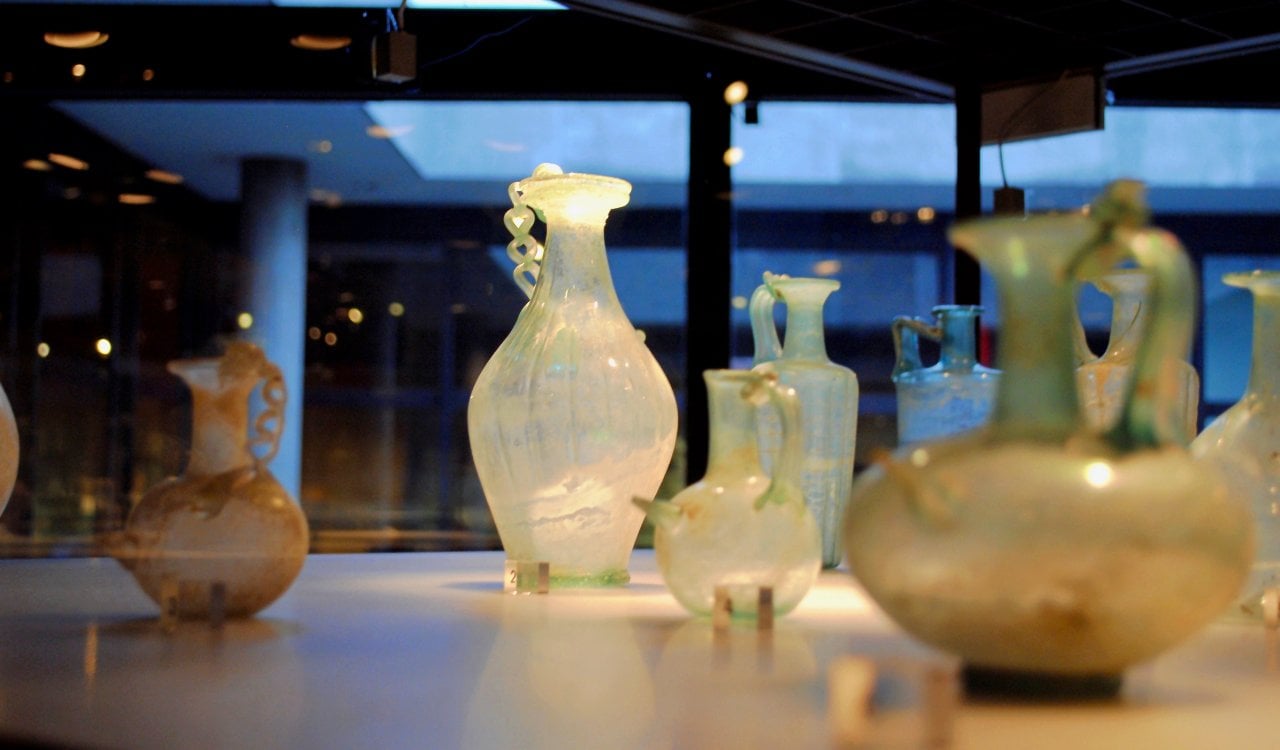
Glassmaking
- Historic Period: Around 2,500 BCE – Ancient Egypt
Glassmaking is also one of the few scientific techniques used by ancient people that is quite similar to what we do today. Glassmaking is simply melting raw materials such as sand, soda ash, and limestone. This is what the ancient people used and what we still use now. This scientific process was said to have originally started in Mesopotamia around 3,600 years ago. Yet most believe it began in Egypt around 2,500 BCE. While initial glassmaking used heat to melt things like sand into storing products, the process of making glass products expanded heavily. Especially when glassblowing was utilized and when technology made things much easier.
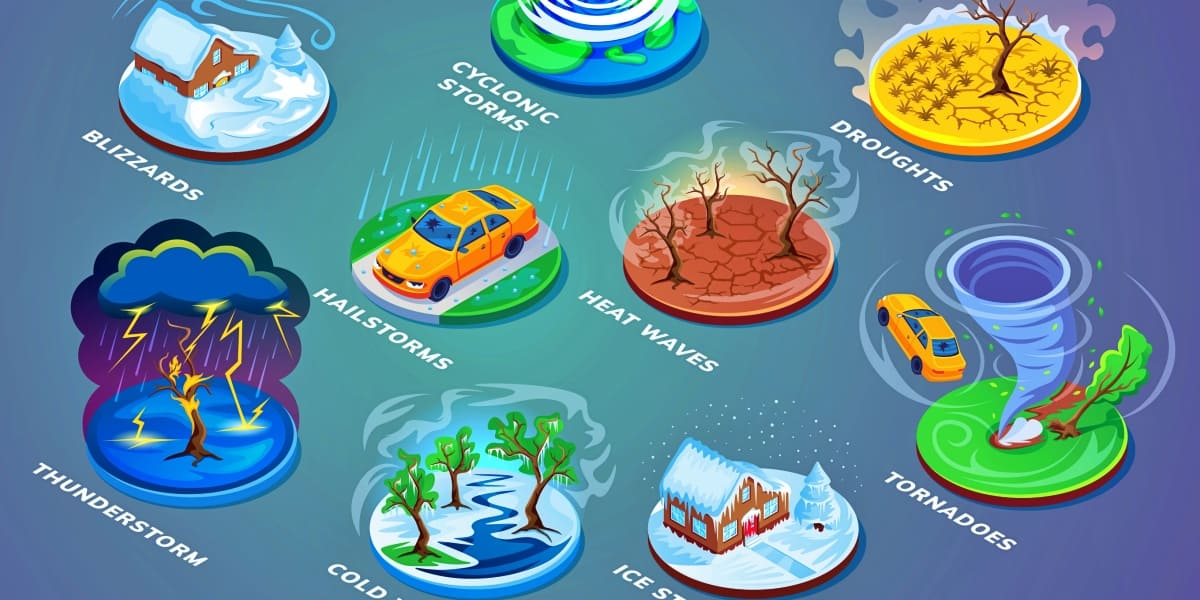
Meteorology
- Historic Period: 300 BCE – Ancient Greece
Meteorology officially began with Aristotle who wrote the term and defined it as the study of the weather. Of course, it is now known for this as well as all atmospheric phenomena. This means it began in Ancient Greece, but it would also be used heavily by the Chinese who expanded upon it. The oldest known work regarding weather studies can be traced back to the Egyptians in 3,500 BCE. Yet an official term and dedicated long-term study did not take place until 300 BCE when Aristotle wrote his thoughts on the field down in the interestingly named Meteorologica.

Metallurgy
- Historic Period: Around 4,000 BCE – Ancient Mesopotamia
Metallurgy is one of the most critical areas in human history as it led to the development of weapons, armor, and much more. Of course, trying to shape and develop metal into something that one could use was not an easy process. Unlike other things on this list, the way we work with metal today is a bit different from the scientific techniques used by ancient people. The concept is still the same though. Metal is extracted, refined, and worked with. The ancient Egyptians, Greeks, and Chinese were all well-known for their work with metal. Yet this really all began in Mesopotamia around 4,000 BCE.

Geography
- Historic Period: Around 2,500 BCE – Ancient Sumeria
Geography is the study of the Earth’s surface and its features and atmosphere, as well as how human activity affects things. This was a huge part of ancient Egypt, Greece, and Rome. Mapmaking was a big part of this, as there was a need to get a proper representation of a location. They all developed their own forms of geography, yet it was Sumeria that was the first to do all of this. Their maps date back to 2,500 BCE, several years before any major maps were present in these other civilizations. Navigation is part of all of this too, with some literally sailing all over just to make maps of various regions to improve trade.

Optics
- Historic Period: 2,000 to 2,500 BCE – Ancient Mesopotamia
Many assume that glasses or lenses for vision and equipment did not come around until Ben Franklin. Yet studies on the properties of light go back several centuries, and a lot of this was used to eventually create lenses and optical instruments. In fact, the ancient Greeks developed very early forms of optics, but the ancient Mesopotamians created the oldest known lenses made from crystal, likely quartz. The lenses date back to between 2,000 to 2,500 BCE. When glass was shown to have reflective and distorted visuals, the idea of lenses among others slowly developed into ancient lenses. However, the world of optics really ramped up in the CE period.

Acoustics
- Historic Period: Around 3,000 BCE – Ancient Mesopotamia
Ancient people had a very huge depth of knowledge when it came to acoustics. This was so deep that they made both indoor and outdoor theaters to specifically allow for acoustics to be much better. A lot of the knowledge revolves around the creation of musical instruments and other devices. It was the Greeks that really put their all into the study of acoustics. However, musical instruments date back to as far as 3,000 BCE in Mesopotamia. Yet some believe that music was made in other forms by people long before this. The fact is that the scientific techniques used by ancient people are still used today when it comes to acoustics. Of course, this is defined as the science of studying and understanding the production, control, transmission, reception, and effects of sound.

Geology
- Historic Period: 300 BCE – Ancient Greeks & Romans
We all know about Geology by now. It is the study of rocks and minerals. Yet it also has to do with the Earth’s physical structure and substance, as well as its history and the processes that act on it. The Ancient Greeks and Romans developed early forms of geology that mostly focused on rocks and minerals. This dates back all the way to 300 BCE. The cool part is that the scientific techniques used by ancient people in this field are mostly the same. Obviously, the additional material added to geology and newer technology made things easier and more efficient. At the end of the day though, things are mostly the same as they were then. Rocks and minerals are studied closely.
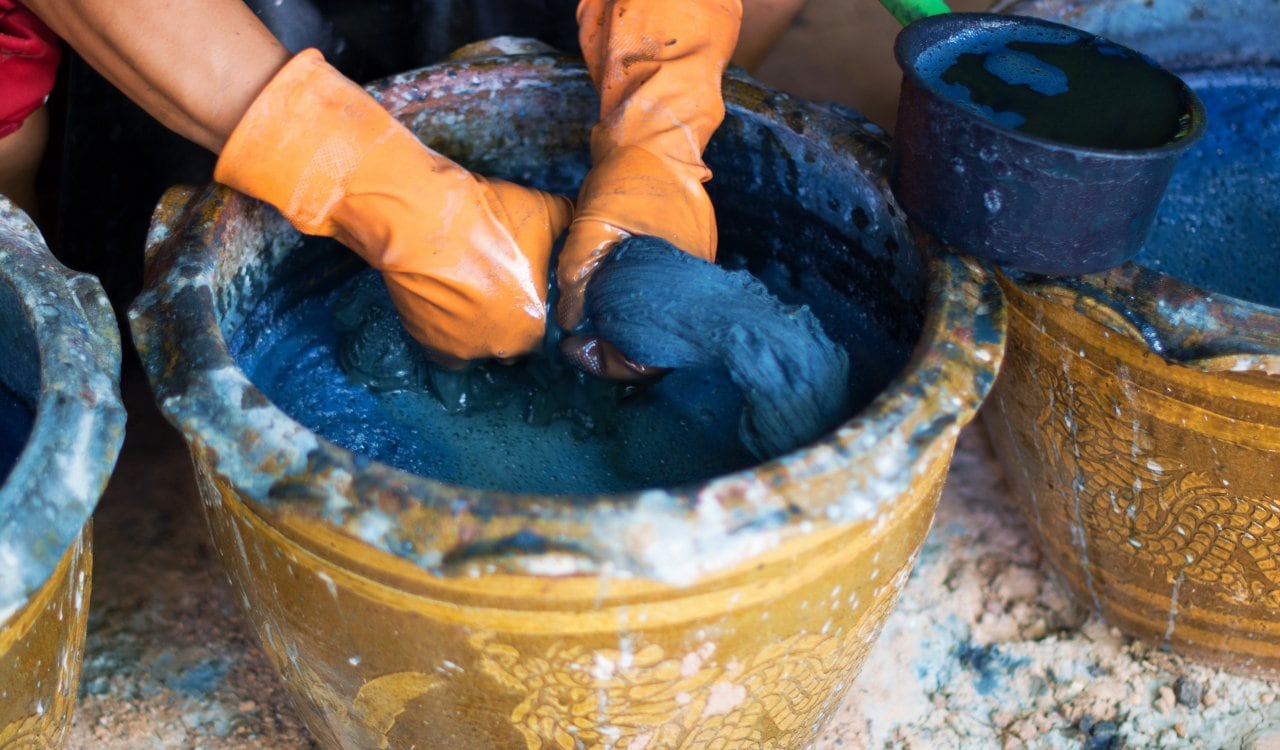
Dyeing
- Historic Period: Around 4,000 BCE – Ancient Egypt
Dyeing was a massive part of the ancient world. For the first time, clothing among other items was able to be given different coloring. How did they manage to dye anything back then? Well, they did it in a few ways. Yet the most notable is using specific plants and minerals that would create various colors. Fabrics and other materials could then be soaked and slowly the dyeing process would take place. The oldest known recording we have of something being dyed was in 4,000 BCE in ancient Egypt. However, it is likely the most notable in this field would be the Phoenicians, who were at the center of the purple dye trade. Their city of Tyre led to the name given to their purple color, known as “Tyrian Purple” which came from a local sea snail. Their fabrics were highly valued and considered the stuff of royalty.
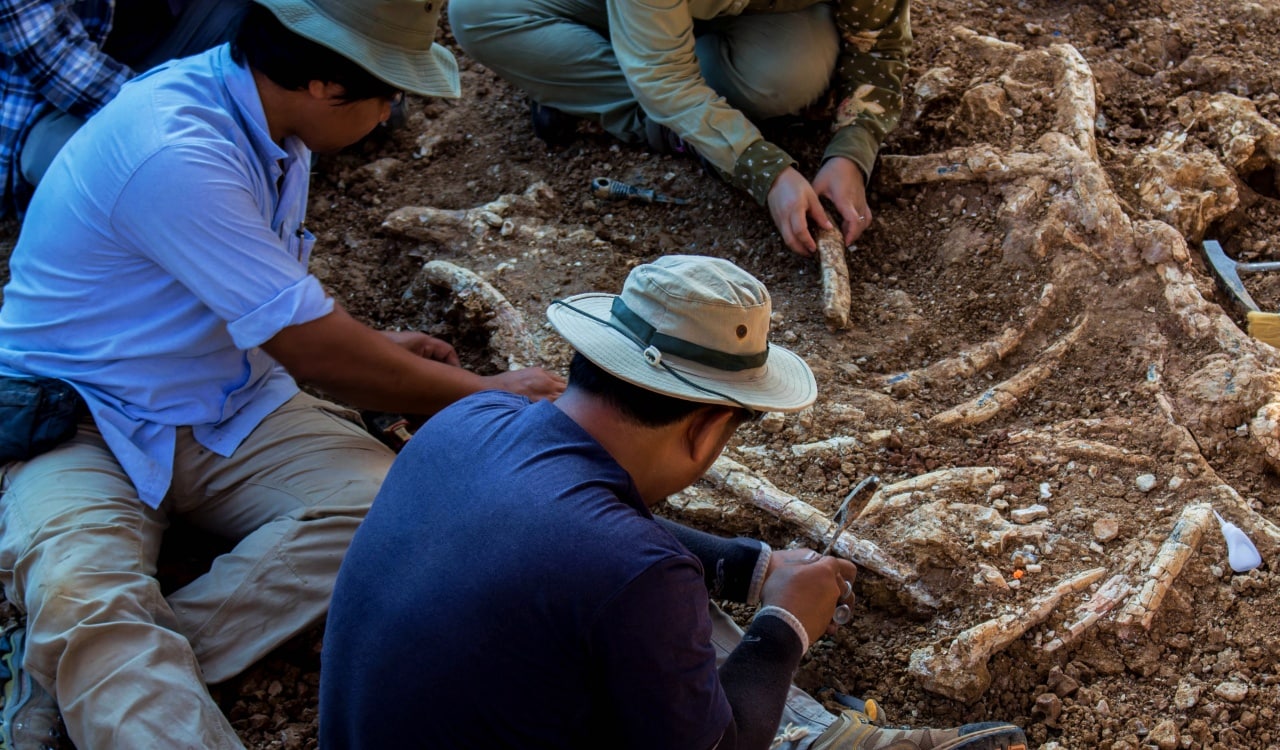
Paleontology
- Historic Period: 300 BCE – Ancient Greece
This might surprise a lot of people because we’re always discussing how anthropologists find things dating back to ancient times. Yet the ancient people also had an interest in the past, and that led to one. of the biggest scientific techniques used by ancient people. Paleontology was originally developed by ancient Greeks and Romans. For them, this mostly consisted of the study of fossils and their significance to the history of life. The oldest known written record on paleontology dates back to Greece in roughly 300 BCE. Yet it is likely that people studied these things long before and simply did not write them down or their recordings were lost to history.

Hydrology
- Historic Period: Roughly 300 BCE – Ancient Greece
Most of us know that hydrology is simply put, the study of water and its properties. This was quite a notable study for people in the ancient world. In fact, the ancient Greeks, Romans, and Egyptians all studied the field in a major way. The oldest written record on hydrology dates back to around 300 BCE in ancient Greece. It would go on to become a huge asset to inventions in the ancient world. This was especially important to the Greeks & Romans, who would invent the first bathhouses along with intricate systems for major cities to consistently have water when needed.
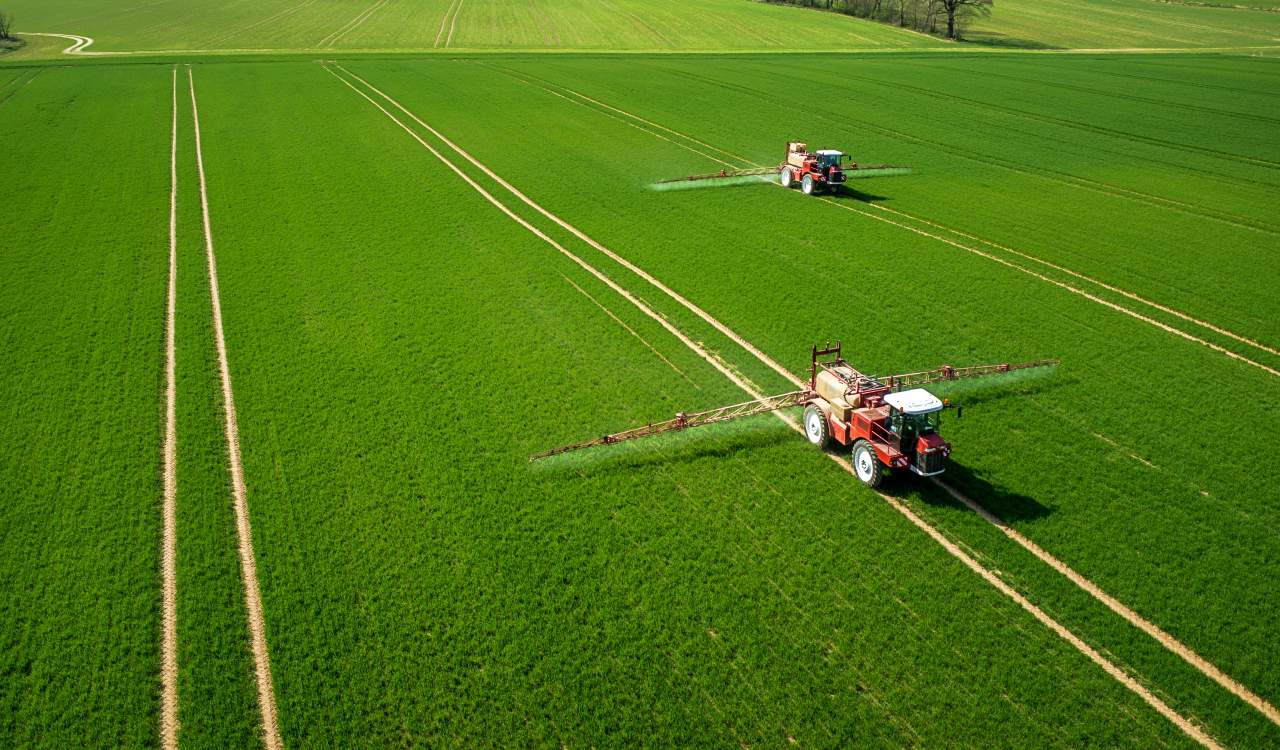
Agriculture
- Historic Period: Pre-10,000 BCE – Various
Agriculture is perhaps the most important of ALL scientific techniques used by ancient people on this list. Without it, we’d likely never survive as a species. It used to be that tribes would come together and often go out on hunts to attain food. Others might gather up berries, nuts, or whatever else they could find. Yet both would become problematic and cause people to move around. Agriculture changed all of that, as you could plant crops at specific times of the year and store a large amount of food. Ancient Egyptians, Greeks, and Chinese all developed their own forms of agriculture. However, the earliest known agricultural system dates back to Mesopotamia in 8,000 BCE. Yet the idea of agriculture in general goes back much further.

Irrigation
- Historic Period: 4,000 BCE – Ancient Mesopotamia
Speaking of agriculture, something needed to be developed to handle this process in a better way. That led to the formation of irrigation. This is one of the biggest scientific techniques used by ancient people as well. This system brought water to crops and gardens in a much more efficient way. While the oldest known irrigation system goes back to 4,000 BCE in Mesopotamia…the Egyptians and Chinese also developed their own forms. Many believe that proper irrigation led to much larger farms and crop growing that could be utilized heavily in the ancient world.

Animal Husbandry
- Historic Period: Around 13,000 to 9,000 BCE – Ancient Mesopotamia
This term might make people wonder… did dudes marry animals or something? Luckily, the term “husband” in a marriage is not connected. Animal husbandry is a section of agriculture concerned with raising animals to get meat, fibers, milk, and other products. Pretty much, they handled day-to-day care for animals, selective breeding, and the overall raising of livestock. Ancient Egyptians, Greeks, and Chinese all developed their own forms of this, but the idea of domesticating animals dates back to between 13,000 to 9,000 BCE in Mesopotamia. Most of the time, cattle, sheep, goats, pigs, and others would be bred on farms and then used for specific human needs.

Architecture
- Historic Period: Roughly 10,000 BCE
Obviously, architecture utilizes a lot of what we’ve mentioned on this list so far. It is a true science to get right, and some of the most impressive ancient architecture still stands in some form today. Places were designed and built for specific purposes and were always functional, aesthetically pleasing, and durable in most situations. Ancient Egyptians, Romans, and Greeks are known for some of the most beautiful and impressive examples of this. Today, the oldest known structures still standing are the great pyramids. Specifically, the Pyramid of Giza, which has been up since around 2,570 BCE. Yet we began building things long before this.

Clockmaking
- Historic Period: 1600 to 1501 BCE – Ancient Babylon
While things like watches and many modern clocks were not invented until later on, clockmaking had been a thing for centuries. Many needed to have some way of keeping up with the passage of time and how to measure it. This is why clocks were developed along with other timekeeping devices. Ancient Greeks & Chinese people developed their own version of this. The Greeks were first to the party, with the development of the oldest known clock dating back to 250 BCE. However, timekeeping is a very old process. This was a very interesting process early on and was one of the most unique scientific techniques used by ancient people. It dates back to ancient Babylon in the 16th Century BCE! They used a water clock here, which would be used elsewhere along with fire and other natural methods.

Masonry
- Historic Period: Roughly 4,000 BCE – Ancient Egypt & Mesopotamia
Masonry was the process of building structures from individual units. These were often laid in and bound together using mortar to create multiple things like structures and even decorative objects. Usually, bricks were used for this, but masons might also use marble, granite, cast stone, concrete blocks, limestone, and even glass blocks. Of course, the oldest known form of masonry used stone. The oldest structures utilizing this dates back to ancient Egypt and Mesopotamia in roughly 4,000 BCE. This is one of the few scientific techniques used by ancient people that has not changed much from its original use and purpose.

Engineering
- Historic Period: Around 2,500 BCE – Ancient Greeks & Romans
Perhaps one of the most notable scientific techniques used by ancient people is the world of early engineering. While the Egyptians were known for this, especially when constructing their pyramids…the Greeks and Romans took things to a completely different level. They invented the first levers, pulleys, winches, gimbals, cranes, and gears. If that is not enough for you, the Greeks and Romans also invented the truss and truss roofing system that would become a staple in building design afterward. Oh, and they are also responsible for the earliest form of robotics.

Chemistry
- Historic Period: Around 4,000 BCE – Ancient Sumeria
Chemistry is one of the most notable scientific techniques used by ancient people that truly worked for them. Their concept of chemistry truly comes from how they experimented with things to get chemical reactions. They understood the basic principles of chemical reactions and would then use that knowledge for numerous purposes. This might be for things like brewing and tanning, but also it could be used in some early medications. Of course, poisons were invented out of this too, which isn’t a good thing. Chemistry dates back all the way to ancient Sumeria in 4,000 BCE. However, it would go on to be heavily expanded upon by the Egyptians, Greeks, and Chinese.
Where Do We Find this Stuff? Here Are Our Sources:
United States Geological Survey
University of California – Berkeley
Harvard University
Princeton University
Columbia University
Brigham Young University
Tennessee Tech University
American Museum of Natural History
National Geographic

